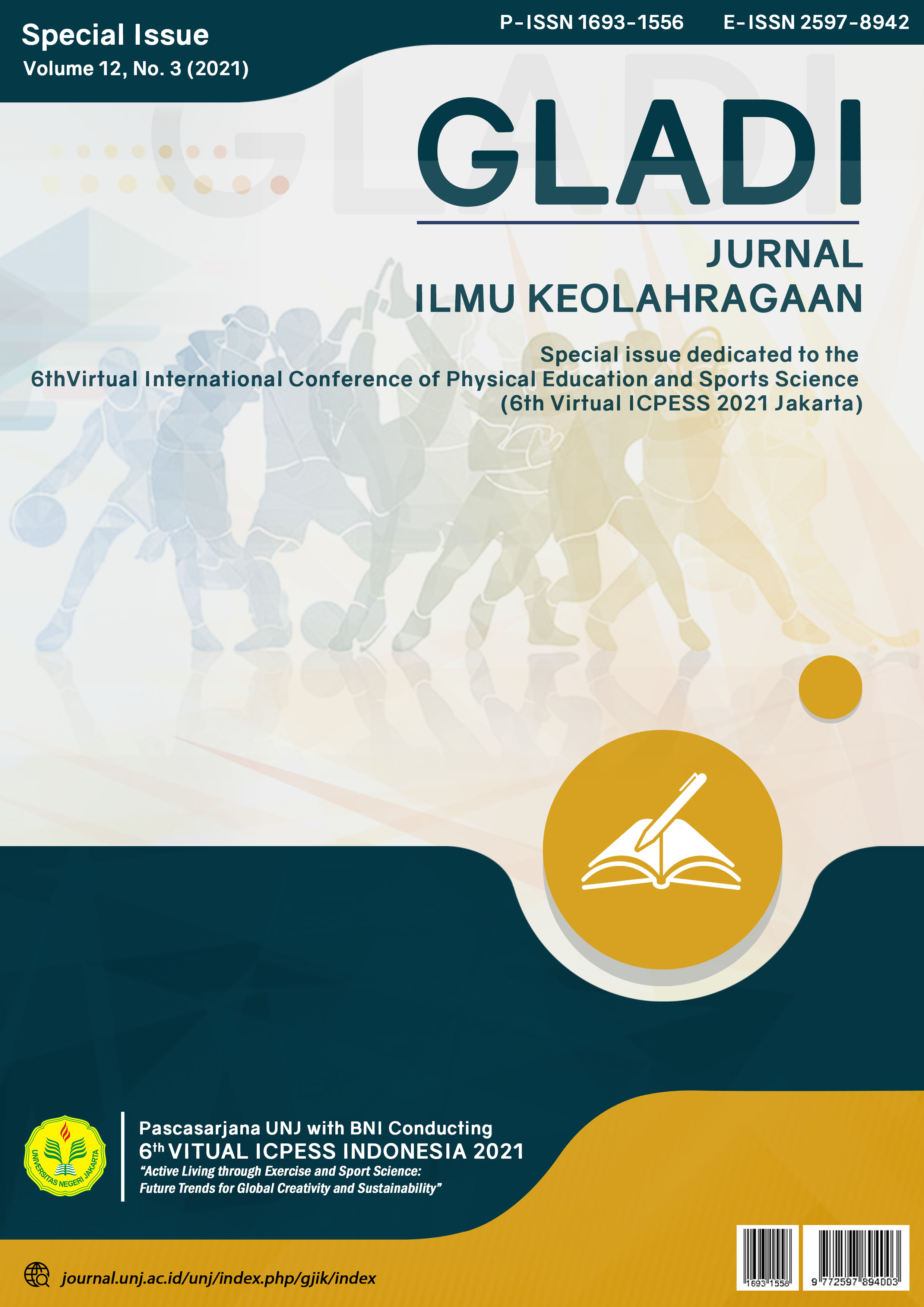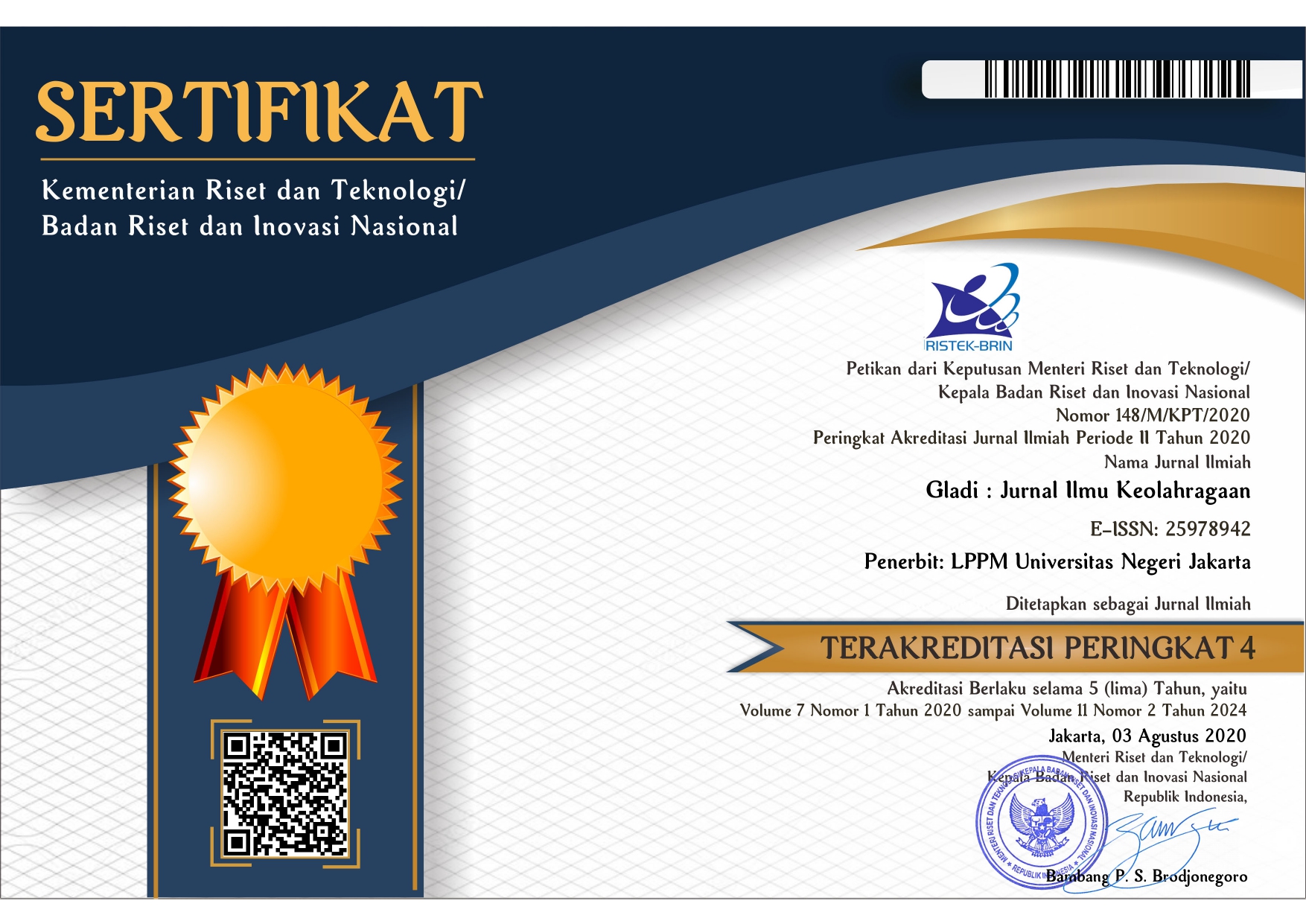The Effect of Plyometric Training up and downstairs and obstacle jumping on the improvement of squat style long jump results for male participants in the DKI Jakarta Athletic Club
DOI:
https://doi.org/10.21009/GJIK.123.04Keywords:
Plyometric Step Up Down, Obstacle Jump, Long Jump.Abstract
The objectives of this study were 1) To improve the hurdle jumping training on the long jump results of the squat style in the male participants of the DKI Jakarta club. 2) Increasing the plyometric training up and downstairs to the results of the squat-style long jump in the male participants of the DKI Jakarta club. 3) This is more influential between the plyometric training of hurdle jumping and plyometric training up and downstairs to improve the squat style long jump results for male participants in the DKI Jakarta club. The method to be used is an experimental method, namely the research design using "(Pre-Test and Post Test Two Group Design (pretest-posttest randomized group design)", namely to determine the independent and dependent variables (Ronny, 2007: 138). The initial and final tests using the hurdle jump obtained an average deviation of MD = 0.26 standard deviation SD = 0.07 and the standard error mean SEMD = 0.03 these results produce at-table at degrees of freedom (DK) = 5-1 = 4 with a significant level 5% obtained the critical value of t-table = 2.776 with these results, then H0 is rejected because t-count = 7.63 which means that t-count ≥ t-table then H0 is rejected and Ha is accepted, where the hypothesis is Ha = there is an increase in obstacle jump training to the long jump results squat style on club athletes in DKI Jakarta.
Downloads
References
Dadang Masnun, (2001) Kinesiologi, Jakarta:FIK UNJ
Walpole, R.E. (1992) Pengantar Statistika, Jakarta: PT Gramedia Pustaka Utama
M. Sajoto, (1995) Peningkatan Dan Pembinaan Kekuatan Kondisi Fisik Dalam Olahraga, Semarang
Kartikasari, S. (2017). Pengaruh Antara Latihan Squat Jump Dan Naik Turun Tangga Terhadap Peningkatan Daya Ledak Otot Tungai Pada Atlet Club Bola Voli 76 Kediri Tahun 2016. Jurnal Kesehatan Olahraga, 3.
Fadli, Z. Perbedaan Pengaruh Latihan Lompat Gawang Dan Naik Turun Tangga Terhadap Daya Ledak Otot Tungkai Pada Atlet Ekskul Anggar Man 2 Model Medan Tahun 2018. Jurnal Ilmu Keolahragaan, 17(2), 62-72.
Nur, A. (2019). Pengaruh Latihan Lompat Rintangan terhadap Kemampuan Lompat Jauh Gaya Jongkok pada Siswa Putra SMP Negeri 1 Luwuk. Jurnal Pendidikan Olahraga, 9(1), 1-8.
Nurhayati, M., & Hildawati, D. (2020). Pengaruh Latihan Lompat Rintangan Meraih Sasaran Diatas terhadap Kemampuan Lompat Jauh Gaya Gantung pada Siswa Kelas V di Sdn Tomo Kecamatan Tomo Kabupaten Sumedang. JOURNAL RESPECS, 2(1), 15-19.
Ronny Kountur, (2007) Metode Penelitian utuk Penulisan Skripsi dan Tesis, Jakarta: PPM
Shodiq, A., & Sugihartono, T. (2019). Pengaruh Latihan Lompat Gawang Dalam Meningkatkan Tinggi Lompatan Spike Pada Permainan Bola Voli Siswa Ekstrakurikuler Di Man 2 Kota Bengkulu. Kinestetik: Jurnal Ilmiah Pendidikan Jasmani, 3(1), 29-33.
Sudarsana, I. P. A. B., Pangkahila, J. A., Satriyasa, B. K., Weta, W., Sandi, I. N., & Dewi, N. N. A. (2019) Pelatihan Loncat Naik Turun Tribun Dan Pelatihan Loncat Naik Turun Bangku Meningkatkan Daya Ledak Otot Tungkai Pada Peserta Ekstra Kurikuler Bola Voli Putra Sma Negeri 1 Tegallalang. Sport and Fitness Journal.







